
Cardiff and Vale University Health Board and Cardiff & Vale Health Charity are delighted to announce that they are participating in the RHS Cardiff’s Blossoming Beds competition on 12-14 April 2019. To book tickets, please visit the RHS website.
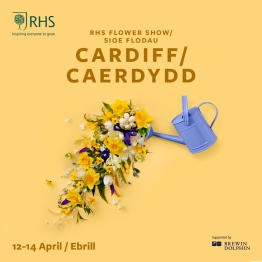
The Blossoming Beds Competition is brand new to the RHS Flower Show Cardiff in 2019 and aims to encourage those with a passion for plants and an eye for beautiful blossoms.
The objective of the competition is to create a pocket of spring colour and interest that will inspire visitors and could be recreated at home.
Each week we will be updating you on our entry progress from our team of volunteers and the garden designer Eileen Wood. If you’d like to support this project, you can donate via the justgiving website.
Blog post one – 5 March 2019
Currently fuelled by an energetic team of volunteers and sponsors, supported by the designer, Eileen Wood, Cardiff & Vale Health Charity is now in the throes of designing, planning and building their first RHS competition garden for the Blossoming Beds category.When the Health Charity was invited to exhibit at this year’s RHS Flower Show in Cardiff, Ein Berllan – Our Orchard provided the ideal subject, as the theme is ‘gardening and health’ and that’s what the project is all about.
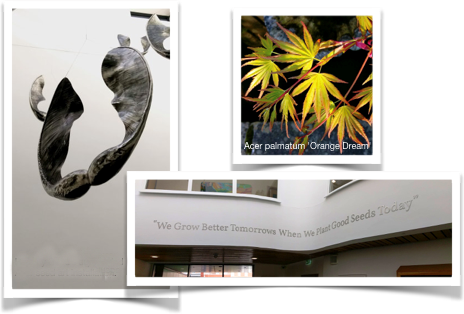
Inspired by the Health Charity’s big vision to create a multi-faceted ecological health park at Ein Berllan – Our Orchard at University Hospital Llandough, Eileen proposed the idea of packaging the seven acre site into the allocated Blossoming Beds show space of 9sqm, which is by no means, no small undertaking!
It was important to provide a clear narrative for the #RHSCardiff design. This has been achieved by connecting the garden’s design elements to the ethos of Ein Berllan – Our Orchard and the Heath Board’s commitment to Wellbeing of Future Generations Act and its creative arts programme.
Inspired by the uplifting sycamore seed art installation by Gideon Petersen in the entrance to Hafan y Coed Hospital, the garden is officially titled ‘We Grow Better Tomorrows When We Plant Good Seeds Today’: ‘Rydym Yn Tyfu Gwell Yfory Pan Fyddwn Yn Plannu Hadau Da Heddiw.’
Blog post two – 7 March 2019 from Eileen Wood, Garden Designer
Did you know there’s an apple tree for every size of garden, including a balcony gardens?
Admittedly growing apple trees in the seven acres at Ein Berllan – Our Orchard, is not really an issue. In fact we needed to select trees that would be bold growing in tough conditions. It is important to select the right fruit tree for the space and in line with your maintenance commitments.
A happy plant, like us, is more able to withstand disease. So for our space, we chose seventy heritage apple trees grown on rootstock M25.
This produces the largest trees, which may not be suitable for the average garden. That said, my garden does have a mature ‘Bramley Seedling’ probably on rootstock M25. It requires maintenance, including a winter prune and you need to know what you are doing. I must confess to loving my apple tree!
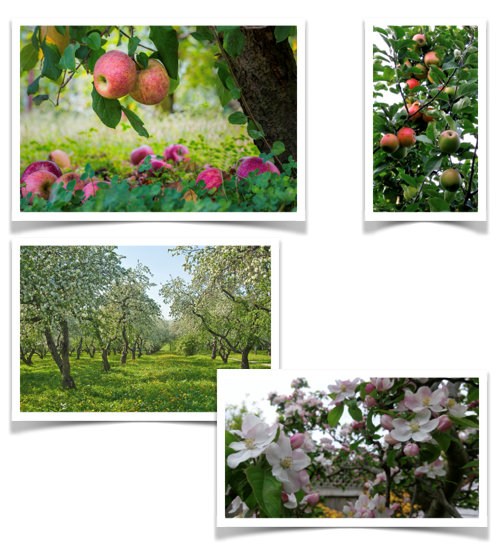
An interesting fact is the Ein Berllan – Our Orchard project is 3000 times larger than our #RHSCardiff garden! So I hear you ask “how can I create an orchard in my small space?” Well, you may want to consider growing ‘Ballerinas’ in your garden. Six ‘Ballerinas’ will comfortably create a mini orchard in the #RHSCardiff nine sqm garden. For us we’ll be mixing up apple tree sizes.
Ballerina apple trees are a group of compact naturally growing columnar apple trees. After five years of growth they have a final height of about 2.4m and width of about 0.60 metres. They can grow in patio pots and their short or non-existent side branches require hardly any pruning.
For fruit growth, apple trees need to grow with a pollinator ‘apple friend’ from a different apple variety, especially Ballerina trees. Choosing rootstocks and pollinator groups can seem a bit daunting. Why don’t you join us at the show on 12 April 2019 and we’ll talk fruit trees in more detail. Looking forward to meeting you.
Blog post three – 8 March 2019 from Eileen Wood, Garden Designer
This has been an interesting week of contemplation and discussions around the practicalities of moving soil and stone boulders. At the moment the stone boulders are part of a soon to be dismantled roundabout, located in the hospital grounds.
Lucky designer that I am, I have ten beautiful weathered stone boulders, to repurpose for Ein Berllan – Our Orchard. Five of these will be used to create an ecological ‘wall’ for our #RHSCardiff garden. When the show finishes they’ll be returned to the hospital and at a later date and be repurposed within the orchard woodland.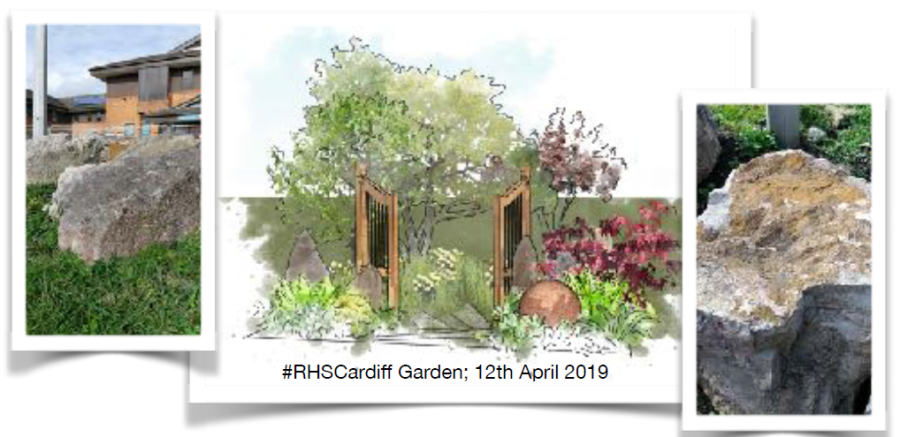
The vision for the woodland is inspired by the romantic and ecological ‘Giardino di Ninfa’, near Rome. This Italian garden provides a delicate environmental balance, using water and carefully chosen botanicals. It has been created from the ruins of the medieval town of Ninfa. The name Ninfa derives from a temple of the Roman era, dedicated to the Naiads, goddesses of spring water. A spring is located in the garden.

Interestingly, within Ein Berllan – Our Orchard, we also have our own spring with a series of ‘ravine like’ brooks carving through the grounds. A designer’s dream. This is were I work with nature’s creativity and let her influence the final design. I see my role as a supporting one, guiding opportunities to enhance the composition.
The stone boulders will be placed within this area creating a small standing stone glade. perfect for contemplation and yoga on a dry day! Why don’t you join us at the show 12 April 2019 and we’ll talk ‘contemplation gardens’ in more detail. Looking forward to meeting you.
Blog post four – 11 March 2019 from Eileen Wood, Garden Designer
This week I’m in the middle of working through one of many RHS show garden conundrums. How to ensure that our #RHSCardiff garden becomes a reality, is completed on time and within budget. And importantly, looks like the picture below!
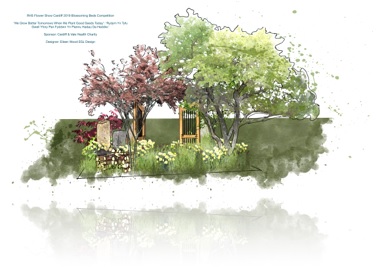
Building a show garden is an amazing process to watch. If you’ve ever seen a time lapse videos from RHS Chelsea, you will know that every Royal Horticulture Society show starts as a green field and hey presto, like a phoenix rising from the ashes, stunning gardens appear! They disappear even quicker!
#RHSCardiff is challenging, it is the earliest RHS show being held first for the year. The early growing season may have been restricted by cold weather and grey skies, even worse, late spring is cold or gets blanketed in snow. The tricky part is making the gardens appear as though they have been there forever or at least more than the three to seven show days. The plants need to look healthy, happy and in bloom, regardless of the trials and tribulations of the early growing season. Even #RHSChelsea show gardens, exhibited in May, can struggle despite their huge budgets.
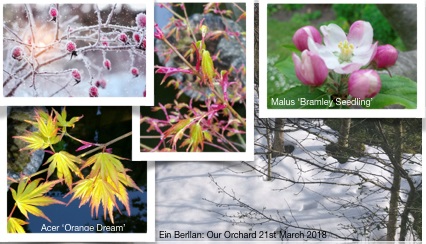
So we are flying on a wing and a prayer. We have a tiny budget, volunteers who are plant monitoring, growing daffodils and tending to the meadow turf. Two beautiful Japanese Acers ‘Orange Dream’ are being lovingly nurtured, in the hope that their pretty leaf buds will unfold for their big day. As for the apple trees, two beauties are yet to be found! Wish us luck ;)!
Blog post five – 14 March 2019 from Eileen Wood, Garden Designer
A question I’m often asked is ‘how do you start a design?” As a Garden Designer, I gather information and evaluate the options.
When I’m invited to put forward a design, such as this one for cardiff & Vale Health Charity, I like to keep a clear open mind. Admittedly, ideas do start to form, but without all the information they have nowhere to go.
The design process is not static, it’s very much dynamic and involves a number of influencing factors, from functional, financial to creative. Most importantly, it’s about the individuals and what they bring to a project. These factors, orchestrated by the designer, shape the realisation of the final design. Each project is unique.
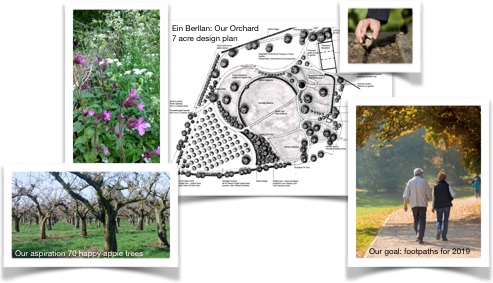
‘Ein Berllan – Our Orchard’ is currently within the dynamic design process, steadily we’re realising our vision. Our seven acre ecological project, requires a lot of commitment, time and patience.
We have a fantastic team of volunteers, artists and supporting businesses. They are with us for our #RHSCardiff garden which is providing a window in Bute Park, to introduce ourselves and importantly meet you.
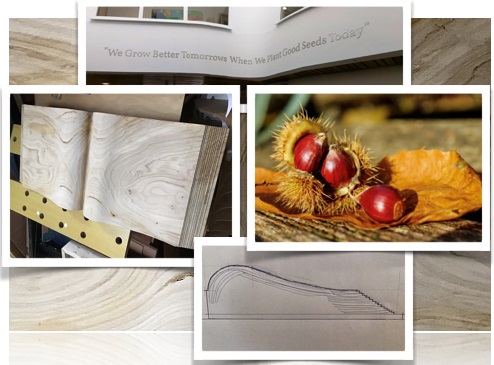
This week I’m meeting with Men’s Sheds Cardiff who will be working on site as part of our team with the #RHSCardiff garden build. In addition, using their woodwork skills, they’ll be bringing poetry into the garden. The poem ‘We Grow Better Tomorrows When We Plant Good Seeds Today’ is the #RHSCardiff garden’s title, and is being depicted in a beautiful book, which is crafted from sweet chestnut, Castanea Sativa.
Blog post six – 18 March 2019 from Eileen Wood, Garden Designer
This week I’m travelling the country to source suitable plants to create our #RHSCardiff entry. This is proving a challenge. My dichotomy is that ‘Ein Berllan: Our Orchard’ is predominantly a summer feature, starting with apple trees flowering in May, then progressing to a late summer classic meadow of billowing grasses, buzzing insects and the scent of warm hay on the breeze. This is when meadow grasses come into their own and we do not have the budget to bring on summer plants in controlled greenhouses.

Our #RHSCardiff garden is in late spring! How do we create a garden that represents what we’re about, and at the same time, encourage you to be confident to let a patch of your lawn grow with attractive pollinator friendly plants? Often these plants are perceived as weeds…one persons meadow maybe another person’s weed garden! But hey, happy pollinators with full tummies! What’s not to love!
Spring is the season for plucky bulbs and bold blossoms to display their colours. Their function is to provide food for early pollinators and in turn receive assistance with reproduction. A bit of, ‘you scratch my back and I’ll scratch yours’ which is literally what happens. The insects delve into the flowers looking for nectar, then, refreshed, they leave the plant often covered in pollen. The insects continue on their travels dispersing the plant’s genetic code. This in turn supports everyone’s food production.
Spring is also the start for fresh young botanicals, growing in sheltered verges and the fringes of woodland, the sort not readily available in garden centres. These plants make use of available light and moisture, growing in the light before larger overhead plants unfurl their leaves, currently tucked tight from biting winds. Once the tree canopy is established the dynamics of the ground layer change, becoming shady and drier and hence creating different growing conditions.
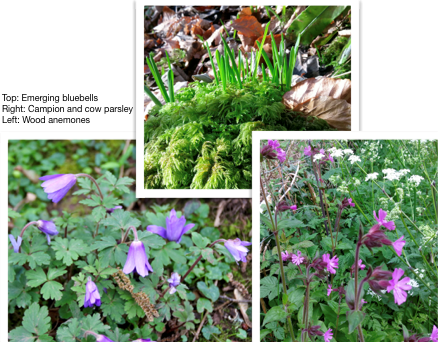
So! A challenge is a challenge, and one we are taking on full steam ahead! Wish us luck and do visit us at #RHSCardiff 12th April to 14th April 2019, to see how we get on.
Blog post seven – 25 March 2019 from Eileen Wood, Garden Designer
Spring’s been officially sprung for a week and what a change in the weather….hello sunshine! Fingers crossed it continues for #RHSCardiff…twelve days to garden build!
This weekend, I took a walk in ‘Ein Berllan: Our Orchard’, and what a delight! I found bumble bees flying low across floral carpets of lesser celandine, primroses, Violas and dog’s mercury. Soon to follow will be hardy geraniums, stinging nettles and tree blossom. These plants have a significant role in supporting our pollinators and will be reflected in the planting detail of our #RHSCardiff garden. Why don’t you pop along to #RHSCardiff and take a look?
Ficaria vernum: lesser celandine is often one of the first woodland flowers to appear. Their yellow star-like flowers provide an important nectar source for early insects and bumble bees emerging from hibernation. In the garden this plant can be invasive, but it soon withers and disappears by early summer.
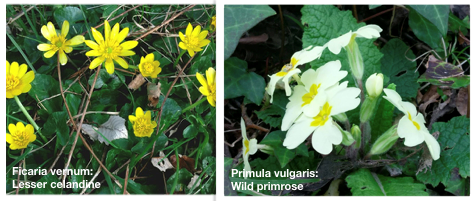
Primula vulgaris: primroses and Viola rivinianna: dog-violets can can be found growing in a glade in the woods. Primroses are scented flowers with five pale yellow petals and a darker centre, flowering from February to June. At the moment we don’t have too many but it is something we will be working on. For #RHSCardiff we’ll be using cultivated primroses. These can be found in an array of colours and still retain the classic primrose perfume.
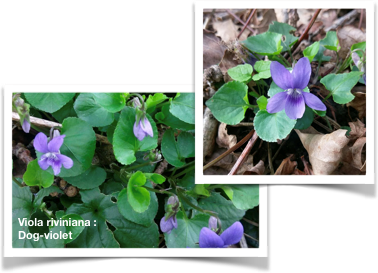
Dog’s violet (common) flowering from March to June, has a nectar tube, a hypanthium spur behind the pretty purple petals. This violet is not the ‘sweet’ violet. Dog means, it lacks scent. There are many Violas, some are edible. These are from the following groups: Viola tricolor or heartsease: Viola odorata: Viola cornuta. Viola cornuta is a pretty, low growing, evergreen garden perennial. We will be using these in the #RHSCardiff garden.
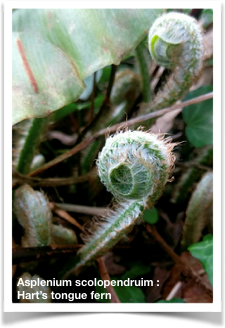
A quick note: Legislation under the Wildlife and Countryside Act (1981) makes it illegal ‘ to uproot any wild plant without permission from the landowner.’. It is illegal to pick any plant growing in a designated conservation area or designated SSSI. So the best thing is to source plants from reputable growers and grow your own early pollinator friendly plants.
We’ll be available at #RHSCardiff show 12th to 14th April 2019, to answer any of your questions.
Blog post eight – 26 March 2019 from Eileen Wood, Garden Designer
Following an earlier walk in ‘Ein Berllan: Our Orchard’ I’m mulling over whether to include stinging nettles in our #RHSCardiff garden!? “Hmmmmm!”… just hear me out…
Urtica dioica: stinging nettle (common) is a much maligned plant, probably because it hurts when you touch it! The stems and underside of the leaves are covered in fine hairs which, when they break off in the skin, act like a hypodermic needle releasing a stinging cocktail containing formic acid. That said, stinging nettles are a very useful plant. The young spring leaves, when cooked, provide a nutrient rich vegetable. The plant is an insect attractant and mineral fixer which is excellent for making liquid plant feed. Small tortoiseshell and peacock butterflies use them as food plants. Further more the old plant stems can be stripped to make string. Have I won you over? P.S. Wear gloves when handling this plant!
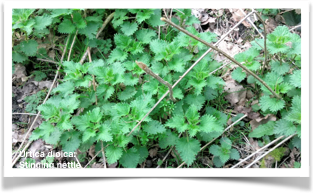
In my garden I have some hardy geraniums which are greening up and even showing some flowers, there is a hardy geranium for every garden situation. In ‘Ein Berllan: Our Orchard’ Geranium pratense: meadow cranesbill and Geranium robertianum: herb Robert can be found. Both are common plants of meadows, woodlands or shady habitats. Meadow cranesbill has blue flowers and herb Robert has pink flowers with reddish stems. Herb Robert has a distinctive smell and an unusual seed dispersal mechanism. It is a catapult mechanism which can hurl the seeds more than five metres! Slugs. ants and other ground insects then move them on further afield. I will be using some in the #RHSGarden.
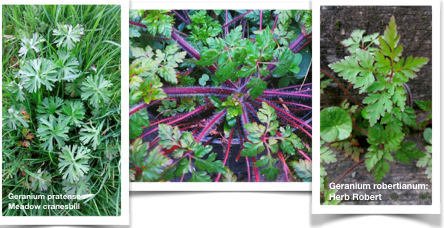
Mercurialis perennis: dog’s mercury can be found in woodlands or shady hedgerows. From March to late autumn it grows in groups of either all male or all female plants and spreads by rhizomes. Eventually it can shade out the woodland floor preventing rarer plants from thriving. It belongs to a group of plants within the Euphorbiaceae family that have a milky toxic sap. Dog’s mercury has an unpleasant smell and is highly toxic. Wear gloves to handle and do not ingest.
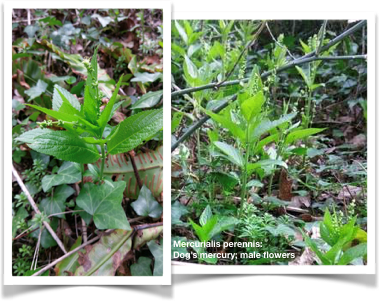
Some people would see a number of these plants as weeds, which moves me onto the question, what is a weed? One persons weed is another persons heaven… The dictionary defines a weed as ‘a wild plant growing where it is not wanted and in competition with cultivated plants’. Unfortunately plants that are useful to wildlife are often deemed a weed in our gardens. One aim for our #RHSCardiff garden is to show you, that through careful choices, you could grow a magical wildlife haven in your garden. A ‘mini me Our Orchard’. By doing this you’d be supporting our struggling pollinators, which we are dependant on. Why don’t you pop along, with your questions, to #RHSCardiff show 12th to 14th April 2019.
Blog post nine – 5 April 2019 from Eileen Wood, Garden Designer
We’re into the penultimate week to the building of our #RHSCardiff garden! This week the team are, ignoring the weather, finalising preparations and keeping fingers crossed for no surprises! I’ve been catching up with artist and sculptors, Dilys Jackson and John K Brown, both are working on pieces for our garden.
Interestingly a garden could be viewed as an art form that uses the challenging dimension of time….a garden certainly, never stands still! A garden’s composition requires thought and planning, too much detail can overwhelm the viewer. That aside, we’ll certainly be packing a lot into Our #RHSGarden. It will be ‘framed’ by four trees and within it will be number of compositions using ‘butterfly space’, plants, stones and art created by Jackson and Brown. ‘Butterfly space’ provides breathe, is restful on the eye and creates an invitation for butterflies to move freely.
Jackson and Brown are both inspired by nature, each manipulating metals to create tactile nature forms. I’m delighted to be working with both on our #RHSCardiff garden and ‘Ein Berllan: Our Orchard’.
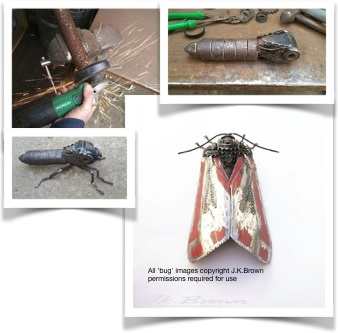
Dilys Jackson is a freelance sculptor, inspired by nature’s plant and land forms and their palpable relationship to forms seen in the human body, particularly those connected to biological growth. Using a variety of materials to narrate her vision, her work exhibits a sensual and tactile quality. The piece exhibited in our #RHSCardiff garden is titled ‘Form from Nature’
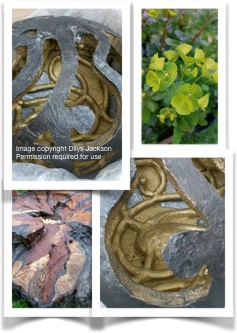
John K Brown from GreenHandSculpture is a freelance sculptor inspired by nature and aspects of ecology which influence his work. He breaths new life into repurposed metal components, sculpting them into life like bugs and nature inspired forms. The pieces exhibited in our #RHSCardiff garden are insects frequently found in ‘Ein Berllan: Our Orchard’ a cinnabar moth (Tyria Jacobaeae) and a labyrinth funnel web spider (Agelena labyrinthica).
Both Jackson’s and Brown’s work fits perfectly with what ‘Ein Berllan: Our Orchard’ is about…new beginnings, health and wellbeing and our #RHSGarden ‘We Grow Better Tomorrows When We Plant Good Seeds Today’: ‘Rydym Yn Tyfu Gwell Yfory Pan Fyddwn Yn Plannu Hadau Da Heddiw.’
Why don’t you pop along to meet us at #RHSCardiff 12th April to 15th April. Take a look at our work and share your thoughts, we’d love to meet you.
Blog post Ten – 29 May 2019 from Eileen Wood, Garden Designer
Today, 29th May 2019, is a reality check moment with a big phew! The last six weeks have flown by. The summer RHS shows have arrived and this month’s #RHSChelsea show has just closed…leaving April’s #RHSCardiff show a spring memory!
So, before more time passes, it’s time to breathe and take a look back at the Cardiff & Vale Health Charity’s #RHSCardiff show entry…and, what a stunning result! ‘‘We Grow Better Tomorrows When We Plant Good Seeds Today’ was awarded a prestigious Silver Gilt Medal and Best Blossoming Bed! This is a new garden category which premiered, this year, in Cardiff!
I couldn’t be happier, a tough challenge was set, and what a result! For me, it was fabulous to be so well-supported by the team and of course have a very happy client, Cardiff & Vale Health Charity (the phew moment!) Here’s a quick reminder of the challenge that had lay ahead:
- Create the seven acre Ein Berllan: Our Orchard in 9sqm
- Eight weeks to design and build on a tiny budget
- Use a build team of volunteers with little horticultural knowledge but with a wealth of other skills
- Source medal worthy plants
- Weather; unpredictable risk of frosts, hailstones, cold wind, rain, some sunshine
- Relocating two 1/2 tonne rocks
- Ensuring the garden looks as though it’s been growing forever or at least more than the three show days!
- Keep smiling, keep the humour, keep the focus…it’s all about solutions not problems!
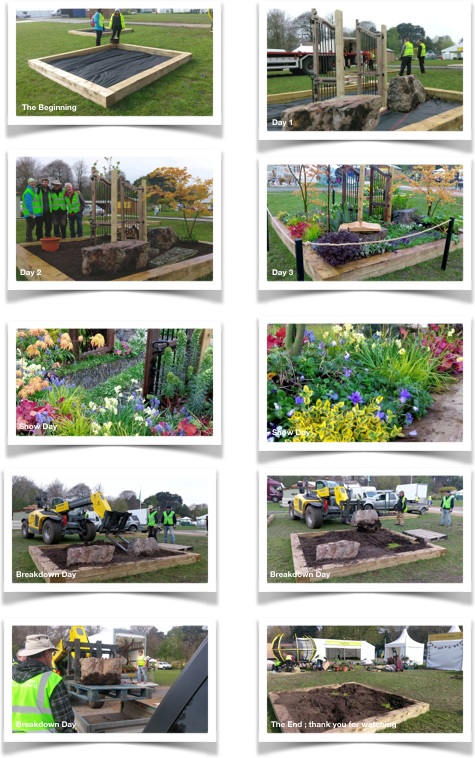
The garden attracted a lot of interest, including the build process. Just to confirm, every leaf, flower, shovel of soil and each rock was put in place at the show ground within three days. I mention this because we were asked if we’d built the garden off site and craned the whole thing in!
I’m also asked if I’m sad to see a show garden disappear, in one way yes, but for me, it was built as a transitory ‘picture window’ to showcase a narrative through the universal language of gardens…similar to a bride’s bouquet, both representing a moment to be treasured.
So we come to the garden’s breakdown. In less than 24 hours, our nine sqm garden had resumed its original identity as a patch of grass in a field. The #RHSCardiff show plants worked hard, cold winds, limited sunshine. All rocks, gates, sculptures and construction materials have been relocated.
- Plants have been lovingly returned to ‘borrowed homes’
- The family apple tree and colour full crabapple have been planted in Ein Berllan: Our Orchard
- The plants shared amongst the garden’s community support groups:
- Hafan y Coed Activities Team
- Rookwood Horticulture Therapy Group
- Mens Sheds Cardiff
I would therefore like to say a big thank you for all the support I received. In particular our fabulous build up team, Men’s Sheds Cardiff and Hafan y Coed Activities Team, also great clients…Cardiff & Vale Health Charity and a special thank you to those answered ‘wing and a prayer moments’…which, equates to, despite nature doing its own thing, keep faith, keep smiling, everything will work out 🙂

